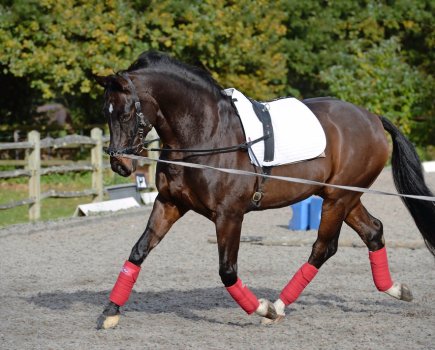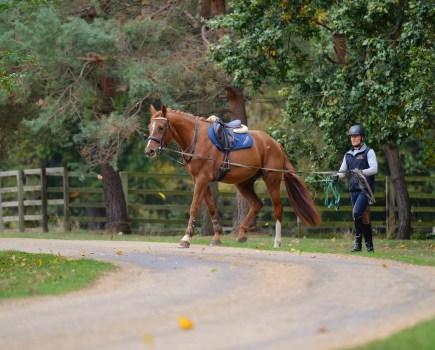WHAT IS IT?
Similar in look to a running martingale, the breast strap loops onto the girth and then splits into two elasticated straps, but these clip directly on to the bit rings.
WHEN SHOULD IT BE USED?
It is mainly used for ridden flatwork, lungeing or loose-schooling. Can be used for pole work and small jumps.
HOW DOES IT WORK?
When the horse raises his head too high, it places a gentle downward pressure on the bit, with the elasticated section providing a more ‘asking’ feel than a pull. As soon as the head is lowered the pressure is released – the horse operates it by his movements. It also offers the benefit of giving no opportunity for the horse to lean on the reins.
WHAT IS IT GOOD FOR?
– Encouraging acceptance of the contact
– Improving suppleness of the back through a rounder outline
– Encouraging a consistent, steady outline
– Improving looseness of the paces through suppleness of the back
The Harbridge helps to create a consistent contact and develops a rounder outline. “It can help horses who want to maintain a hollow frame above the bit and are unsteady within the contact,” explains expert Tara Osborn. “They lack the connection from quarters to bridle and, therefore, don’t develop any topline muscles. By encouraging them to use their backs, this can be corrected.”
WHAT CAN GO WRONG?
As with all training aids the correct fitting and use is vital. Tara says: “The horse needs to be driven forward into the contact, otherwise engagement isn’t established, the correct muscle won’t be developed and the horse will fall onto the forehand.” In addition, if it’s adjusted too tightly the horse’s nose will be pulled in and the horse will be behind the bit and become stiff in the back. Too loose, and the training aid won’t prevent the horse working in a poor outline.









